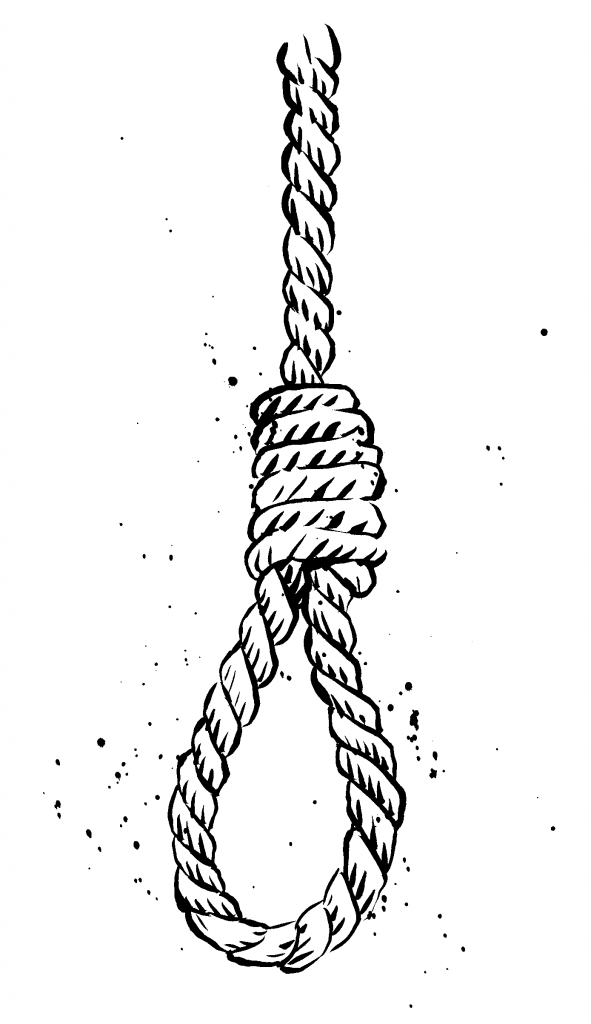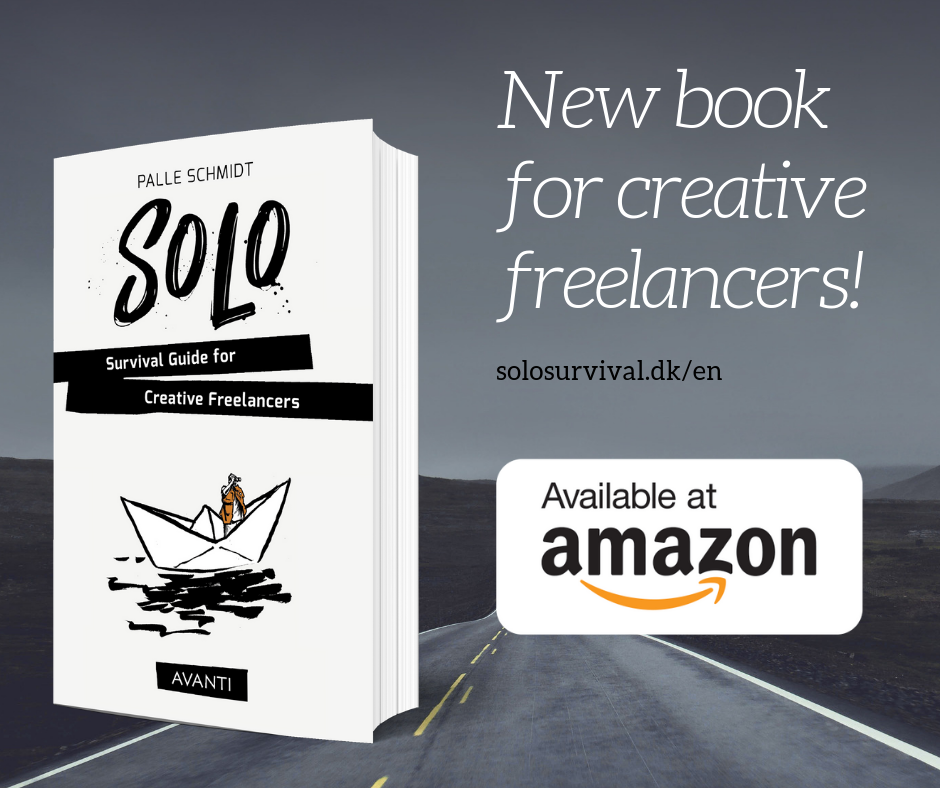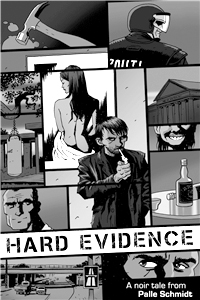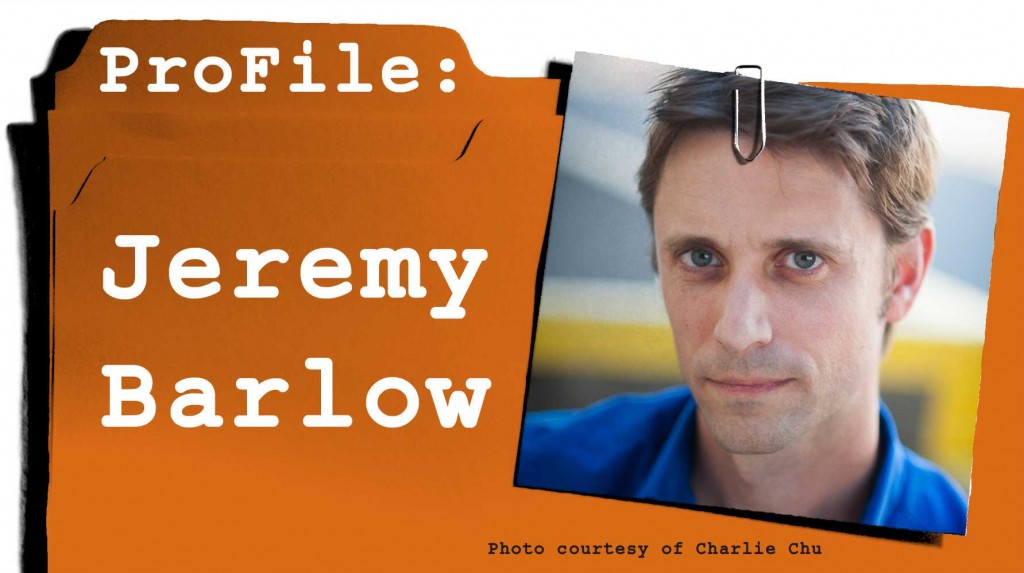Your worst enemy as a creative… is yourself!
If you think you’re alone in feeling like a hack, a fraud and a talentless poser, think again. We all have an annoying voice in our head, telling us we suck! What to do?
Watch this video, that’s a start.
How to Write & Draw Comics
Your worst enemy as a creative… is yourself!
If you think you’re alone in feeling like a hack, a fraud and a talentless poser, think again. We all have an annoying voice in our head, telling us we suck! What to do?
Watch this video, that’s a start.

The fear of failure, the fear of finishing. When a work is finished and put out into the world it can feel like a loss of control and setting yourself up for criticism. It can be hard to live up to the expectations of the audience as well as your own.
If you’re not able to “dance with that fear”, as Seth Godin put’s it, you are dead in the water. It could help to trick yourself into thinking of the work as a jam session rather than a large scale concert where nothing must go wrong. We talked about this idea earlier, but the fear of the blank page is real and tangible. You need to splash some paint on that canvas, put yourself in a situation where you don’t freeze up. I still have a ton of doubts about whatever I am creating. Experience has taught me to push through those doubts and distracting my monkey brain in the process. Just putting on a pair of headphones and doing one task at a time, going for progress not perfection.
When I was working on my graphic novel STILETTO, I made a rule for myself; I was not allowed to redraw or make significant corrections until after I had finished all 120 pages of artwork. I made mental notes whenever I was dissatisfied with a panel, promising myself I would fix it later. But guess what? When looking at the book as a whole, redrawing those panels didn’t feel so important any more. I ended up redrawing maybe a handful of panels, all because of continuity or for clearer storytelling, not because I didn’t like the art. I was able to keep myself from getting derailed by postponing judgment. It also saved me a ton of work.
Attempts to cheat your own brain like that don’t always work. If you feel you lack ideas or lack the drive to create, go do something else. I always used to think of my creativity as a bonfire that had to be kept burning. I was afraid the fire would die out if I left it alone for too long. Now I feel like walking away from it for a day, a week or even a month is the best way to get a bigger fire burning. Seeing new places, getting new experiences and learning something new are almost surefire ways of getting out of a creative funk.
On a day-to-day basis I also try to use the approach of getting a different perspective. I bring my notebook on a walk along the lakes or to a cafe. I flip my drawings over on the light box, look at the mirrored image and immediately spot mistakes I was blind to before. I print out my manuscript and go sit in another chair or in the kitchen rather than stare at the computer screen. Going back and forth between digital and analogue as well as changing scenes can help you get out of whatever rut you’re stuck in.
This post is an excerpt from my book SOLO – Survival Guide for Creative Freelancers – Get in now on Amazon.


I’m super proud of what we put out there, but I found myself wanting to do something something a non-roleplayer could pick up and enjoy. But at the same time, I knew I had something of a fan base in the RPG underground. What to do?
I think it was at some convention a guy showed me a White Wolf comic, based on the Werewolf game, and encouraged me to do something similar with FUSION. I completely dismissed the idea (because I’m an idiot that way). And then changed my mind less than 24 hours later.
The plot for Hard Evidence (in Danish “Skyggen af bevis”) came from a roleplaying game session. Well, two actually. My friend Thomas Bjerregaard came up with the story of a man who seemingly murdered his wife, and a sinister conspiracy beneath it all. First time around, the setting was America in the 1950’s and the investigators FBI agents. I re-hashed the plot for our FUSION campaign, the setting now a near-future Copenhagen and private investigators on the case.
We took turns as game masters in our campaign, like different directors on a tv-show. My character, ex-con Hauge, wasn’t in the session as it played out, but took the stage for the graphic novel. I enjoyed playing this guy so much, I thought he could use his own show. I toned down his thick-headed personality and made him a bit more articulate for the graphic novel. I wanted the dialogue to be zinging and tough, like Raymond Chandler at his best.
In a way, this project was a stepping stone for me. It got me back into comics, when I thought it too hard. The Devil’s Concubine was scripted and thumbnailed and just laid there, like a mountain waiting to be climbed. Hard evidence seemed like a less daunting task. Drawing it got me back into shape and rebuilt my confidence. The story originally ran as a weekly web comic on the FUSION website, thus forcing me get the damn pages done in time. I can highly recommend this method. Only downside is that everyone has read the book before it comes out. I coerced a few of my peers into doing art for a pin-up gallery in the back, so byers would get something new for their money.
Lessons learned:
Sometimes it’s a good idea to do a smaller project, almost like a throw-away thing rather than trying to tackle the most ambitious thing you can think of.
This post is an excerpt from my book SOLO – Survival Guide for Creative Freelancers – Get in now on Amazon.

I first met Lucy at Periscope Studios in Portland, OR, where I had the great privilege to work from a guest table for a few weeks back in 2014 (you can hear the podcast episode I did with Steve Lieber here). Even then she struck me with her wisdom, despite her young age. I never managed to get a real sit-down with Lucy back then but when I saw her new project 100 Demon Dialogues I jumped at the opportunity to chat with her about dealing with your inner demons as an artist, tabling at cons and having a career as a creative freelancer.
Check it out here and please share with your self-deprecating artist friends!
Links mentioned in this video:

What made you decide to work in the medium of comics?
Comics have always been my first love. I grew up reading whatever comics I could get my hands on, and that passion has carried through my life. There’s something about the way comics work on your brain that’s totally unique; how the visuals and the text interweave, how your mind creates motion and context in the juxtaposition of static images — it’s like a magic trick. A great graphic novel can punch you right in the heart.
What part of the process is the most challenging or frustrating to you?
The stupid, unjustified self-doubt. Despite all I’ve accomplished, I still approach every new project feeling like I have no idea what I’m doing, that I’ve forgotten how to write a script, that I’m gonna blow it and it’ll be the last job I ever get. Typical impostor syndrome. I know it’s not true, and I always push through it to get the work done, but, man — it wastes a lot of time.
Beyond that, my professional life would be so much easier if I could draw my own stories. Working in a visual medium without a visual skill set is a little bit crazy. I have stories I’m burning to tell — and I can see how great the graphic novels would be if they existed — but without an artistic partner to help me execute them, they’re just folders on my hard drive.
It’s just a fact of being a writer in this medium, and I’m not alone in it, I know. It’s all worth it when you do finally establish a collaboration and put it all together. It’s totally worth it.
If you could give one piece of advice to an aspiring comics creator, what would that be?
Give yourself permission to be terrible. For a while. Getting good at anything takes time — you have to put in the hours and get the crap out of your system, because we’re all terrible when we start out. I know when you’re starting out the drive is to make it a career as soon as possible, but you’re better off in the long run to spend the time developing your voice and your point of view. And the only way to do that is to do a lot of crappy work and to learn from your mistakes. God knows I’m still learning.
It’s okay for your first drafts to be awful. They should be! No one’s going to see it, so stink it up! Because no one gets it right the first time, and the real magic happens when you’re editing or revising your work, so just get it out. You can’t fix something if it doesn’t exist.
However, don’t lean on that on an excuse not to up your game. It’s okay to start terrible, but don’t stay there!
website: jeremybarlow.com
Twitter: @Jeremy_Barlow
If you have questions or issues please contact us.
Official mail: mail(at)comicsforbeginners.com